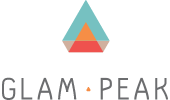Summary:
The Sustainable Collections Project is a collaborative local government cultural heritage network, supporting fifteen organisations, including the Golden Memories Millthorpe Museum, to progress digital access to their collections.
Background:
Golden Memories Museum is a member of the Sustainable Collections Project museum network. Millthorpe and District Historical Society opened the museum in 1965. A team of 20 volunteers operate the museum, comprising eight buildings including a former school house, Good Templars Hall and a Museum of Rural Technology. The museum’s collection includes items relating to pioneers, social history of the town and advances in rural technology.
Community engagement and partnerships:
Since 2007, the Sustainable Collections Project has been working with museum volunteers to document and interpret collections from over 15 museums located across the Cabonne, Blayney and Orange local government areas. Administered by Orange City Council, each of the three councils contributes $15,000 per year to the project.
The Sustainable Collections Project is designed to assist community museums with the documentation, assessment and interpretation of collections and to work with councils to improve the planning and coordination of museums. It recognises that the heritage collections are important community assets that need better documentation and management to sustain their value and significance into the future. A network of museum volunteers meets regularly to advise on training needs, plan workshops, joint projects and events. These programs strengthen co-operation and raise the profile of museums and villages.
Collection:
Golden Memories Museum has an estimated collection of 10,000 to 20,000 objects, including paper-based archives, photographs, social history items and farm machinery. Almost all of acquisitions were received via donation. Approximately 35 per cent of the collection is catalogued using a card system, and an early collection register gives some insight into the original source of items. More recently, an Excel spreadsheet has been developed and used to catalogue approximately 70 per cent of the rural technology collection and 80 per cent of the photographic collection.
Software:
Excel spreadsheets are used for cataloguing and collection digitisation. The museum has developed its own in-house cloud-based collection management system called TangleWeb, which is currently being trialed. The museum chose not to use the eHive catalogue system being used by others across the region and those involved in the Sustainable Collections Project, because it was felt it lacked a category system, requiring extra work on the part of volunteers to make it user friendly.
Process:
The museum is not using significance as a method for determining which items should be prioritised for digitisation, because of the time involved in undertaking significance assessments and writing statements of significance. Photographs are digitised as requests for copies are made. The museum uses a simple metadata system for identifying items in its photographic collections but no other particular digitising standard is followed follows. The museum plans to commence digitising new acquisitions as they are catalogued.
The decision to share collection items on the website will be made on a case-by-case basis, as there is concern within the organisation about sharing the collection online. The selected items will eventually be accessible via a link on the museum website.
Challenges:
- Museum volunteer skills and capability.
- Lack support and advice; ‘not knowing who to ring’ for information.
- Cataloguing and digitising a large number of items, stored across several buildings on the museum site.
- Concern about the security of the uninsured collection once it is discoverable online.
- Cataloguing and digitising must fit around a range of competing museum activities, events and priorities.
- Concern that if the collection is online people will not come to Millthorpe to visit the museum.
- Museum volunteers have not yet considered any other digital access platforms such as Trove.
Opportunities:
- With Sustainable Collection Project Officers engaged to catalogue and digitise collections in the near future, the network has an opportunity to understand and promote the collections held across the region.
- The Sustainable Collection Project Officer role could be adapted to be Regional Museum Officers operating out of the newly opened Orange Regional Museum. An increase in Regional Museum Officers across regional NSW and other states will serve to strengthen the community museum network, and work towards the sustainability of vulnerable and at risk collections across Australia.
- Identifying significant objects and prioritising these items for cataloguing and digitisation would ensure that the most important items held by the museum are well-documented and accessible to future generations.
- The Sustainable Collections Project could explore the potential to share their networks collections on national collection sharing platform, making them available to a broader audience.
Full case study:
This is a summary of the full case study. Download the PDF below to read more about the Sustainable Collections Project and Golden Memories Museum’s approach to making its collection digitally accessible.
